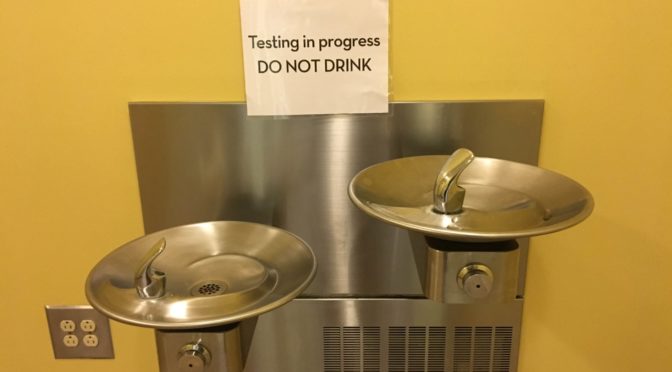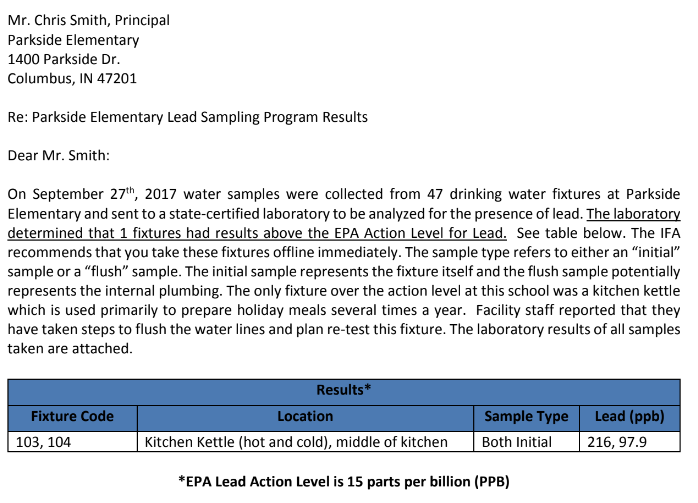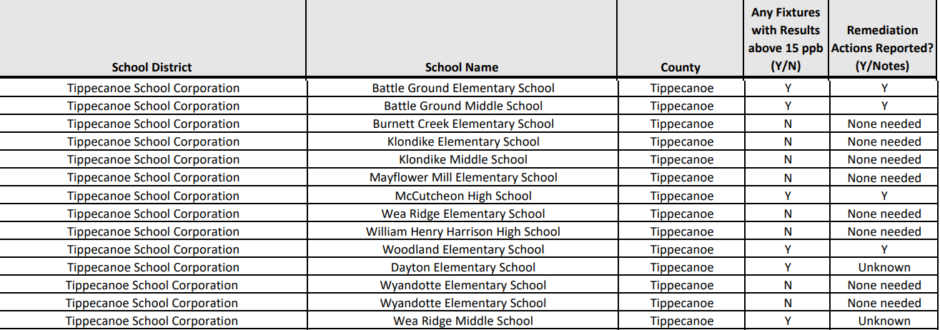(This is a work in progress. Please excuse the brevity, typos.)
Here is the folder that contains all of the letters I have received from the Indiana Finance Authority.
These letters include the actual parts per billion (ppb) levels found at each site within a school. The IFA is releasing 50 of these letters per week, with a total of 1000+ letters.
The original report from the IFA only mentions if a particular school’s test results show one or more locations above the 15 ppb, not the actual lead levels for each school.
IFA’s Lead Sampling Program For Public Schools (official site)
The Indiana Finance Authority (“IFA”), with assistance from the Indiana Department of Environmental Management (“IDEM”), has developed the Lead Sampling Program for Public Schools to help schools assess if there is a presence of lead in drinking water within their facilities.
In the FAQ, you find this entry:
What is considered an elevated lead level in a school’s drinking water?
In Indiana, an elevated lead level is a reading that meets or exceeds the U.S. Environmental Protection Agency’s “action level” of 15 parts per billion (ppb). The action level of 15 ppb is not a measure of health effects. It serves as a signal to the school to take steps to reduce the lead concentration in the water.
According to the Agency for Toxic Substances and Disease Registry (a group within the CDC):
The EPA Lead and Copper Rule has set drinking water standards with two levels of protection [EPA 1991; EPA 2000b].
Action levels for lead of 15 ppb and copper of 1.3 ppm in more than 10% of customer taps sampled. An action level is the level for enforcement.
The maximum contaminant level goal (MCLG) is zero. This is the level determined to be safe according to toxicological and biomedical considerations, independent of feasibility.
“If a water system, after installing and optimizing corrosion control treatment, continues to fail to meet the lead action level, it must begin replacing the lead service lines under its ownership” [EPA 2007].
Exceeding the action level alone is not a violation of the regulation. Public water systems are assigned a violation when they fail to perform actions required by the regulations. This happens after the action level is exceeded [EPA 2000b; EPA 2016b].
The use of lead solder and other lead-containing materials in connecting household plumbing to public water supplies was banned by EPA in June of 1988.
Many older structures, however, still have lead pipe or lead-soldered plumbing internally, which may substantially increase the lead content of water at the tap.
Regulations controlling the lead content of drinking water coolers in schools went into effect in 1989.
For comparison, during the Flint Water Crisis, some areas were testing 100+ ppb for lead. From the records released so far, the highest has been 200+ in Columbus, Indiana for Parkside Elementary:
As of July 30th, Lafayette School Corporation and West Lafayette School Corporation have not tested their water. Tippecanoe School Corporation has participated in the program and several schools have tested above the 15 ppb:
If you follow-up in your own community, please share your story.



